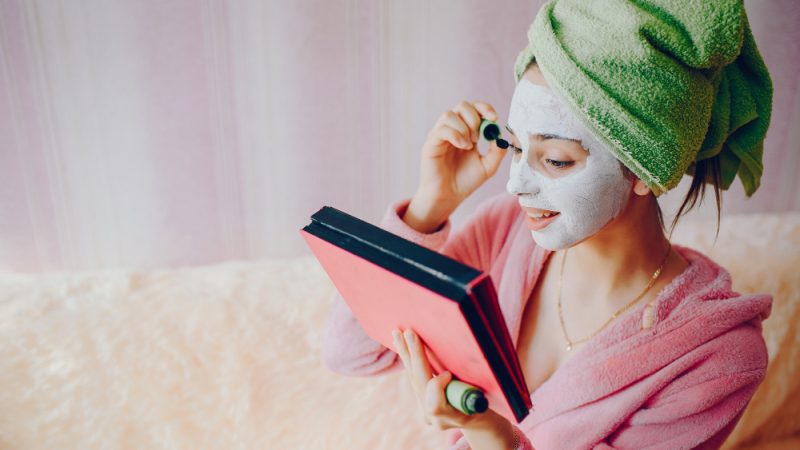Face masks can be a game-changer in any skincare routine—especially when used daily for nourishmentMy Daily Beauty Mask , hydration, or brightening. But even the best product can fail if you’re not using it correctly. Whether you’re using sheet masks, clay masks, or gel formulas, it’s surprisingly easy to make mistakes that reduce the effectiveness of your daily beauty mask.
Let’s break down the 9 most common mistakes people make when using their daily beauty mask—and how to avoid them.
1. Using the Wrong Type of Mask for Your Skin Type
Not all beauty masks are created equal. One of the biggest mistakes is choosing a mask that doesn’t suit your skin type. For example:
Dry skin needs hydrating masks with ingredients like hyaluronic acid, glycerin, or aloe vera.
Oily or acne-prone skin benefits from clay, charcoal, or salicylic acid masks.
Sensitive skin does best with soothing ingredients like chamomile or centella asiatica.
Solution: Read the label, know your skin type, and choose accordingly. Don’t just follow the trends—what works for your friend may not work for you.
2. Leaving the Mask on for Too Long
Many people believe that leaving a mask on longer will increase its benefits. Unfortunately, that’s not true and can even backfire. For example, clay masks that are left on too long can dry out your skin, and hydrating masks might cause irritation if left on overnight when not designed for it.
Solution: Stick to the recommended time mentioned on the packaging. Usually, 10–15 minutes is enough for most daily-use masks.
3. Applying the Mask to Dirty Skin
Applying a face mask on unclean skin is like painting over a dusty wall. Dirt, oil, and makeup residues can create a barrier that prevents the mask’s ingredients from penetrating your pores.
Solution: Always cleanse your face first with a gentle face wash. Exfoliate 1–2 times a week (if needed) before applying the mask to remove dead skin cells and boost absorption.
4. Using the Mask Too Frequently
Yes, it’s called a “daily” beauty mask—but that doesn’t mean your skin wants or needs heavy-duty ingredients every single day. Over-masking can lead to irritation, redness, and compromised skin barriers.
Solution: Choose a mild, gentle formula for daily use—ideally with soothing or hydrating ingredients. Reserve detox or exfoliating masks for once or twice a week only.
5. Skipping a Patch Test
Even if you’ve used dozens of masks before, every new product should be patch-tested—especially if your skin is sensitive or prone to allergies. Ignoring this step could result in breakouts, irritation, or even chemical burns.
Solution: Apply a small amount of the mask behind your ear or on the inside of your arm. Wait 24 hours to see how your skin reacts before applying it to your face.
6. Not Moisturizing After Masking
Many users assume that masking is the final step in their skincare routine. While a good mask can leave your skin feeling hydrated and plump, failing to lock in that moisture with a cream or serum can undo all the benefits.
Solution: Always follow up your daily beauty mask with a moisturizer or facial oil to seal in hydration and maintain the glow.
7. Using Dirty Hands or Tools
Applying your mask with dirty fingers or using unclean brushes introduces bacteria directly onto your skin—leading to breakouts or infections.
Solution: Wash your hands thoroughly before application, or use a clean silicone spatula or brush specifically for your skincare routine. Clean them after each use.
8. Ignoring Ingredient Interactions
Layering incompatible ingredients in your skincare routine can reduce effectiveness or cause skin reactions. For example, using a mask with AHAs right after applying retinol may lead to irritation.
Solution: Understand the ingredients in your daily beauty mask and make sure they complement your routine. Use gentle, non-conflicting products on the same day.
9. Not Reading the Instructions Properly
Each mask has its own set of instructions, and ignoring them can lead to misuse. Some masks are meant to be washed off, others absorbed. Some need to be refrigerated; others don’t.
Solution: Read the label every time you buy a new mask—even if you think you know how to use it. You might discover a tip that improves the mask’s performance.
10. Forgetting to Customize Your Routine
Even a great daily beauty mask might not solve all your skincare concerns. Skin changes based on weather, diet, stress, hormones, and more. Sticking to one mask for too long without evaluating its results can hinder your progress.
Solution: Reassess your skin’s needs every few weeks. Introduce multi-masking (using different masks on different areas) if needed. Customize your approach for better, more consistent results.
Conclusion: Mastering Your Daily Beauty Mask Routine
Your daily beauty mask has the power to nourish, hydrate, and transform your skin—but only if used correctly. By avoiding the 9 common mistakes discussed above, you can make the most of every mask session and ensure your skin looks its healthiest every day.
Remember, skincare isn’t just about products—it’s about consistency, technique, and tuning into what your skin really needs.
FAQs About My Daily Beauty Mask
1. Can I use a daily beauty mask every day?
Yes, but only if it’s formulated for daily use. Look for hydrating or calming masks rather than exfoliating or detox masks, which can be too harsh for frequent use.
2. Is it okay to mix different masks in one routine?
Yes! This is called multi-masking. Use different masks on different areas of your face to target specific concerns—like clay on the T-zone and hydrating gel on the cheeks.
3. Should I use a toner before or after masking?
Use toner before your mask to prep the skin and remove any leftover impurities. After masking, you can follow up with serums and moisturizer.
4. How do I know if a mask is irritating my skin?
If you feel stinging, burning, or develop redness or bumps, wash it off immediately and discontinue use. Always do a patch test to avoid unexpected reactions.
5. What’s the best time of day to use a beauty mask?
It depends on the type of mask. Hydrating masks work well in the morning to prep skin for the day, while calming or detox masks are better in the evening as part of a wind-down routine.
Also read : Tranexamic Acid Serum: 10 Best Products for Hyperpigmentation





